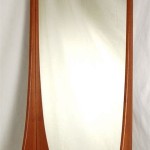Can You Tile Over a Mirrored Wall?
Tiling over a mirrored wall presents a unique set of challenges. While possible under certain circumstances, it requires careful consideration and preparation. Several factors influence the viability and long-term success of such a project.
The primary concern when tiling over a mirror is adhesion. Tile adhesive requires a porous surface to bond effectively. Mirrors, however, present a smooth, non-porous surface. This characteristic significantly reduces the adhesive's ability to grip, increasing the risk of tile detachment and eventual failure of the entire installation.
Before considering tiling directly over a mirror, one must assess the mirror's condition. Any existing damage, such as cracks, chips, or loose sections, will compromise the structural integrity of the tiled surface. These imperfections can telegraph through the tile, leading to unsightly cracks and potentially causing the tiles to dislodge. Furthermore, moisture trapped behind damaged areas can promote mold growth, posing health risks.
The size and weight of the chosen tiles also play a crucial role. Larger, heavier tiles exert more pressure on the adhesive bond, increasing the likelihood of failure. Smaller, lighter tiles distribute the weight more evenly, offering a slightly better chance of successful adhesion, though still not ideal when applied directly to a mirror.
Several methods exist to prepare a mirrored surface for tiling. One common approach involves applying a layer of thin-set mortar directly to the mirror. This layer should be scratched or keyed while still wet to create a rougher surface for the tile adhesive to grip. This method offers some improvement in adhesion, but doesn't entirely eliminate the risks associated with tiling over a smooth surface.
Another method involves applying a specialized bonding primer designed for non-porous surfaces. These primers create a textured layer that promotes adhesion between the mirror and the thin-set mortar. While more effective than simply scratching the thin-set, this method still relies on the mirror's underlying condition and the weight of the tiles.
The most reliable method for tiling over a mirror is to remove the mirror entirely. This eliminates the inherent adhesion issues associated with smooth surfaces. While this approach requires more time and effort upfront, it provides the best foundation for a long-lasting and stable tiled surface. Proper surface preparation after mirror removal, such as cleaning and ensuring a level surface, is essential for optimal tile adhesion.
If removing the mirror isn't feasible, an alternative involves covering the mirror with a layer of cement backer board. This creates a stable, porous surface ideal for tiling. The backer board is attached to the mirror using a strong adhesive and mechanical fasteners. This method provides a robust and reliable base for the tile installation, mitigating the risks associated with tiling directly onto the mirror.
The type of adhesive used also significantly impacts the success of the project. Choosing a high-quality, specifically formulated thin-set mortar designed for challenging substrates can improve adhesion. Consulting with a tile professional can help determine the most suitable adhesive for the specific application.
When tiling over a mirrored wall, long-term maintenance considerations are essential. Regular inspection of the tiled surface for any signs of cracking or loosening tiles is crucial. Promptly addressing any issues can prevent further damage and ensure the longevity of the installation. Furthermore, using appropriate cleaning products and avoiding harsh chemicals can help maintain the integrity of the tile and grout.
In summary, while tiling directly over a mirror is technically possible, it presents considerable challenges and risks. Several preparation methods can improve adhesion, but these methods don't guarantee long-term success. Removing the mirror or covering it with cement backer board offers the most reliable and durable solution for a successful tile installation.
Ultimately, the decision of whether or not to tile over a mirror depends on various factors, including the mirror's condition, the size and weight of the tiles, and the desired longevity of the installation. Carefully evaluating these factors and understanding the inherent risks associated with this approach will lead to a more informed decision and a higher likelihood of a successful outcome.

Mirror Walls And Tiles Mirrorworld

Mirror Walls And Tiles Mirrorworld

Install A Mirror Wall In Your Home Crafty Blog Stalker

Install A Mirror Wall In Your Home Crafty Blog Stalker

How To Hang Mirrors On Tile 3 Ways A Bonus The Palette Muse

Mirror Walls The Glass Pe A Division Of Builders Bonita Inc

How To Hang Mirrors On Tile 3 Ways A Bonus The Palette Muse

Install A Mirror Wall In Your Home Crafty Blog Stalker

Modernizing A Mirrored Wall Tape To The Rescue Average But Inspired

Mirror Walls And Tiles Mirrorworld








